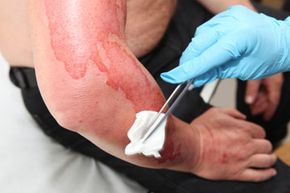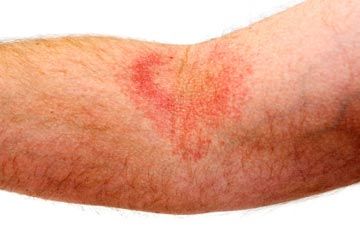It can happen so fast: One minute you're in full dinner prep mode, and the next you're cradling a swollen hand and wondering who moved the stove. If you've ever tangled with something hot and lost, then you know how painful a burn can be. You're not alone. About half a million Americans report burn injuries each year [source: American Burn Association]. More than half of the injuries reported happen to people ages 18 to 64, and the risk for men to get burns is twice that of women [source: Knissl].
There are many types of burns -- not all involve flames, but all can damage the skin and other bodily tissues. For example, scalds, which are liquid or steam burns, are the most common. If you've ever spilled hot coffee on yourself or stepped into a steaming hot shower, then you know the sting of a scald. Luckily, this type of burn doesn't usually cause permanent damage if treated quickly and properly. However, internal chemical burns from ingesting toxic materials can cause damage that's hard to treat. Because so many children are prone to this type of injury, it's important to keep all household cleaners out of reach. Spilling harsh chemicals on the skin can also result in a nasty, superficial burn. Electrical burns, radiation burns and sunburns can also cause damage.
Advertisement
A burn can be major or minor, and its severity is measured by its depth. First-degree burns are the least serious and involve only the top layer of skin. Second-degree burns penetrate the deeper layers, and are a lot more painful than first-degree burns. Third-degree burns are very severe and must be treated by a doctor.
Read on to learn how to assess burn damage and to find some surprising tips about what not to do if you get scorched.
Advertisement


